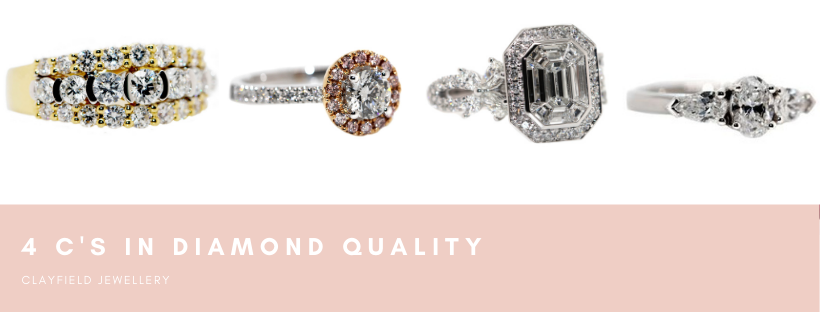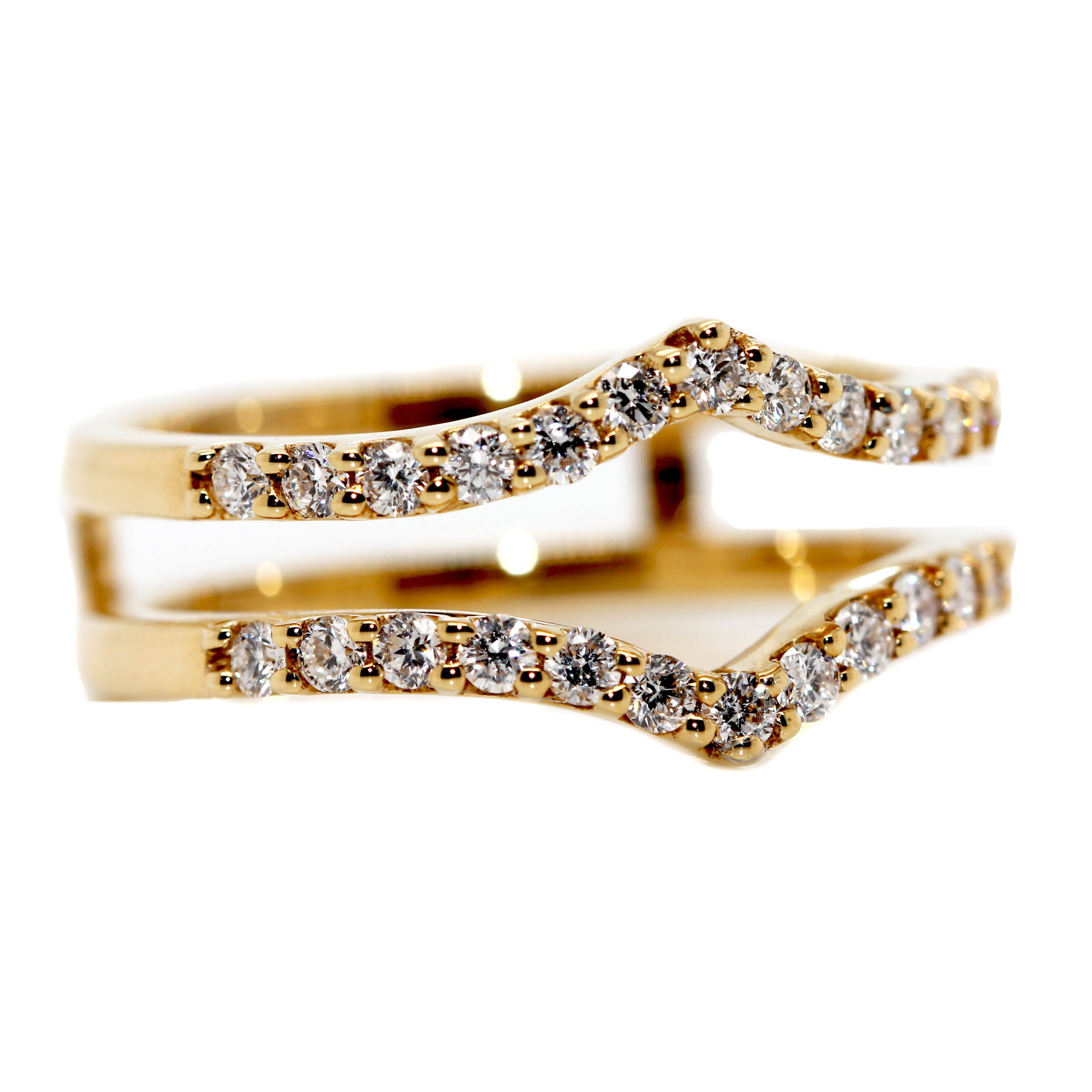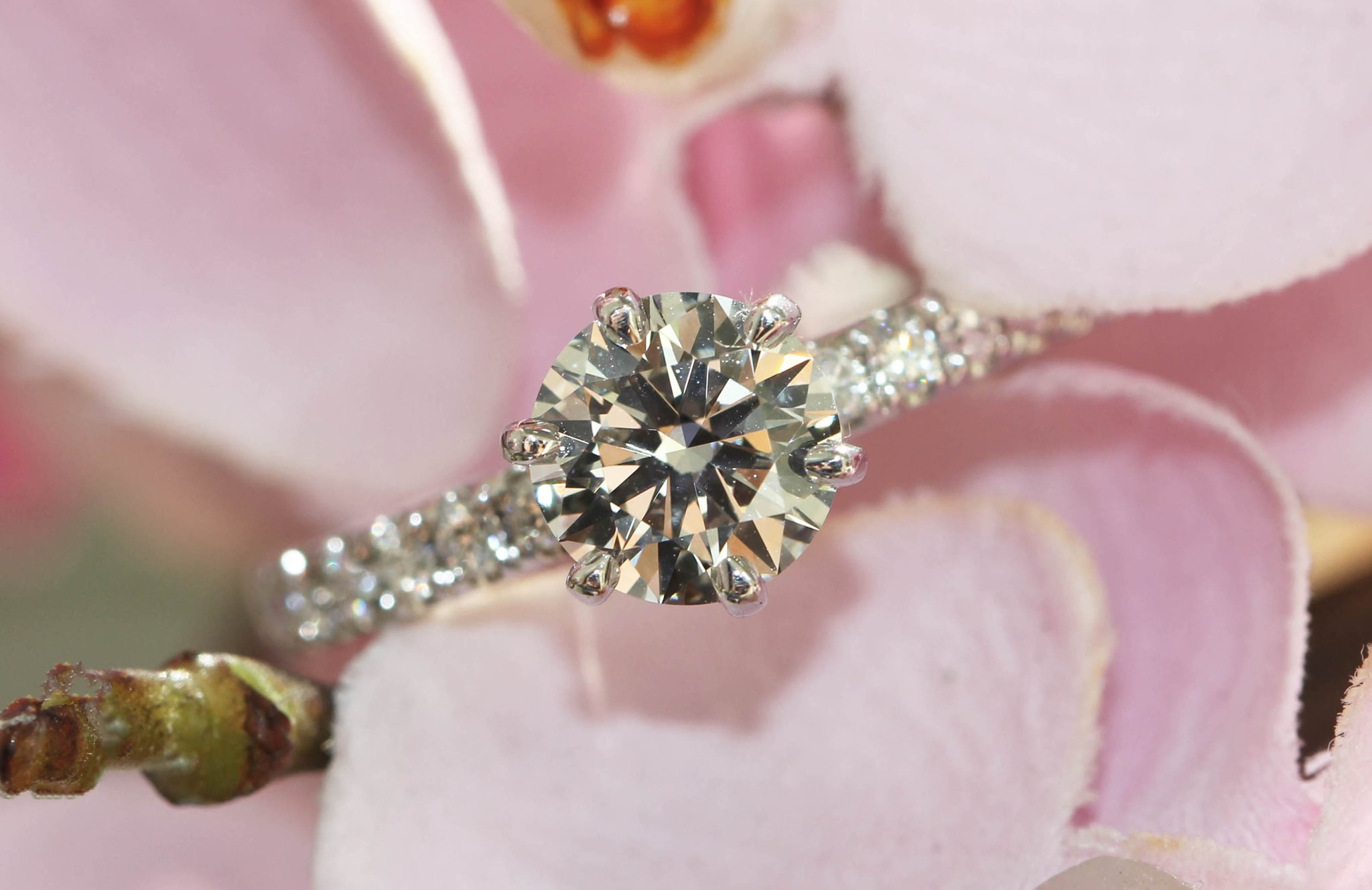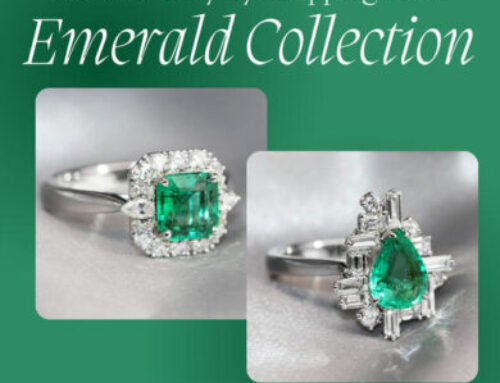A diamond’s quality is determined by the 4C’s:
- Cut: Quality of the angles, proportions, facets, and finishing details.
- Color: How colorless the diamond is.
- Clarity: How clean the diamond is of inclusions and blemishes.
- Carat: The weight of the diamond.
These four qualities of a diamond are the key components that impact its beauty and structure. The 4C’s interact with each other within the diamond. They dictate how the diamond appears and how high quality it is. As an example, the diamond’s ability to reflect light back to your eyes depends primarily on the cut quality but also on colour and clarity.
Cut
The ‘Cut’ is perhaps the most important aspect of the diamond quality as it can impact a diamond’s beauty. Diamond-Cut specifically refers to the quality of a diamond’s angles, proportions and finishing details. These factors directly impact a diamond’s ability to sparkle, along with its overall aesthetic appeal.
Colour
Diamond Colour is graded in terms of how white or colourless a diamond is. The purest grade is ‘D’ where no hue is present. This is the whitest stone you can get! The colour scale continues down the alphabet all the way to Z.
It is important to note that colour is truly a personal choice, especially when it comes to picking a diamond for an engagement ring. Some people want only the whitest colours of diamonds; D, E, F but on the other hand, you might like a slight touch of warmth seen in J, K, L. It is good to think about what colour metal you will be using as well, as that can impact your diamond colour choice too.
Clarity
Clarity refers to to how clear a diamond is and is based on how many inclusions or external characteristics are within the diamond. Inclusions can include minute crystals, growth patterns, tiny enclosed fractures, etc. External blemishes like a chip or break is much more obvious to the eye, and thus worse for a stone’s clarity grade. However, these blemishes are rare and usually occur after the diamond has been cut and graded.
Clarity is measured on a scale from IF (internally flawless) to I2 (included 2). The clearer a diamond is the rarer and thus, the higher the price.
Carat
The last of the 4Cs is Carat Weight. This is a universal way of weighing stones which is how diamonds, and other gemstones, are measured. One important thing to note here is a stone of the same weight can look visually different, depending on how well they are cut. For example, an Excellent cut 0.90ct Round can look just as large if not larger than a Poorly cut 1.00ct Round. This could be due to a large depth or girdle in the Poorly cut stone, allowing for wasted dead weight to be hidden in these areas instead of being spread upon the top visual portion. The diamond carat size is one thing you should think about before starting your diamond search.











Leave A Comment